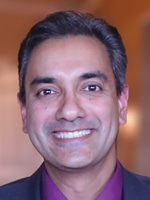What to consider when selecting a biobank information system
October 2022—Cater to your audience, while sage advice, can be a challenging proposition when it comes to choosing a biobank information system.
Unlike clinical laboratories, which use lab information systems that tightly link specimen testing results to patient information in the EHR, biobanks need specimen-centric systems that can store and track samples for research purposes. Biobanks, like research laboratories, need the functionality typically found in laboratory information management systems, or LIMS, says Raj Dash, MD, pathologist and director of laboratory informatics strategy, Duke Health. “The LIMS system is very focused on specimens, inventory management, and related processes,” adds Dr. Dash, who spoke about biobanking technology in a College of American Pathologists CAPcast (“Pathology informatics and biobanking,” available on SoundCloud).
Yet, selecting the proper biobank LIMS to meet your institution’s needs is no simple feat, says James Harrison Jr., MD, PhD, professor and director of clinical laboratory informatics, University of Virginia. (Dr. Harrison led the development of software for the university’s biorepository and tissue research facility.) Biobanks vary with regard to size, specialty, and operating models and have many LIMS options, Dr. Harrison explains. The latter range from commercial general-purpose LIMS that biobanks can tailor to meet their needs to LIMS designed specifically for biobanking. There are also good open-source and cloud-based LIMS options, he adds.
The requirements to become a CAP-accredited biorepository offer biobanks a lot of flexibility when it comes to information systems, says Shannon McCall, MD, director of the Duke Biorepository and Precision Pathology Center and vice chair for translational research within the Pathology Department at Duke. “While most biobanks opt for well-established commercial or open-source options,” she explains, “a biobank applying for CAP accreditation could do all of its recordkeeping on paper logs, Excel spreadsheets, or homegrown software if they organize and protect the data properly and are compliant with [CAP] Checklists.”

Dr. McCall
The Duke center, which primarily focuses on solid tumor specimens, is one of several biobanks in the health care system, and they all use the LabVantage Biobanking LIMS, says Dr. McCall. When selecting the system, Dr. McCall was drawn to the fact that it allowed the use of hierarchical logic for anatomic and diagnostic data annotation, which facilitates the process of retrieving samples. “If you have a hierarchy,” she says, “you can choose all of your breast cancer cases or you can choose all of your invasive lobular breast cancer cases, which are a subset of your breast cancer cases. So, you can track down a level of the [data] tree, or you can go back up the tree and get a bigger set of cases.”
But a lack of standardization in biobanking means that any LIMS, even one designed for biobanking, typically requires significant customization to fit into a biobank’s local operating environment, says Dr. Harrison. “There isn’t a standard terminology for biorepositories that’s widely used. All the terms that you put into your biorepository system to set up all the menus must be defined locally or by particular biobank consortia, without broader standardization.”
A biobank’s operating model is a critical point of differentiation that impacts LIMS requirements, Dr. Harrison continues. Some biobanks focus on acquiring and storing tissue samples, creating a tissue collection that researchers can search retrospectively for specimens that meet their needs. In the other operating model, which Dr. Harrison refers to as a prospective approach, researchers submit their specimen requests and the biobank then begins collecting tissue to meet their needs, a process that can take a couple of years to complete, depending on the nature of the request.
“If you are a ‘prospective’ biobank,” he says, “you are going to need to maintain that request over a period of time and track the extent to which you fill it. So, it’s important to look at whether a product can manage prospective or retrospective specimen requests, or both.”
The University of Virginia’s facility is predominantly a prospective biobank. However, Dr. Harrison notes, UVA collects and stores a limited number of specimens that can be searched retrospectively, so its LIMS also needs to accommodate that mode of operation. Duke operates its biobank as a retrospective and prospective entity. (UVA and Duke University are both members of the Cooperative Human Tissue Network, funded by the National Cancer Institute.)

Dr. Dash
The Duke Biorepository and Precision Pathology Center primarily fulfills cancer-related research requests. However, the biobank tweaked its regulatory operating model during the early stages of the COVID-19 pandemic to help the clinical infectious diseases and microbiology areas collect leftover COVID-19–related specimens, Dr. McCall says. “Duke recognized how important the COVID-19 samples were for future research. So, as a biobank, we wanted the ability to collect and maintain them in an identified state and freeze them for future research projects that had yet to be created or named. We accomplished this through an honest broker mechanism.”
That change in procedure highlights the need for flexibility in a biobank LIMS, Dr. McCall says. Even excluding special pandemic circumstances, a biobank’s LIMS needs to be adaptable to research requests that vary widely. “You have to be flexible in biobanking because you don’t know what report you are going to be asked to run next week,” she explains. “I may need to find a cohort of samples using criteria that are completely different from the criteria that I used last week because that investigator’s project was different.”
Biobank LIMS may be used to manage such processes as scheduling sample collections; accessioning specimens; mapping storage details, including the freezer, tray, and location on a tray where a specimen is stored; tracking the portioning of samples into subportions, including how many aliquots have been created and how many have been used; and managing specimen delivery, which involves arranging shipping and creating invoices to ensure researchers received the intended specimens.
Biobanks typically have their own unique methods for addressing many of these processes. For example, the Duke center records preanalytical variables that could affect a specimen and impact future research. “This includes a specific field identifying the preservative or the media in which the biospecimen is stored, the temperature at which it is stored, and how many times a sample has been thawed and refrozen,” Dr. McCall says.
While a LIMS manages a variety of biobank processes, clinical data that are critical to identifying and classifying biobank specimens for research are often stored or managed in other systems, including the laboratory information system or electronic health record, Dr. Harrison says. “There’s a limited amount of patient information you can capture in a biobanking system as clinical annotations of the specimen because a biobanking system isn’t an LIS,” he explains.
“When the clinical data that will be useful is predictable and of a reasonable volume, a biobank’s LIMS might interface with an LIS or EHR to accommodate researchers’ needs for clinical annotation,” Dr. Harrison continues. “For instance, the contents of surgical pathology reports or specific clinical laboratory results may be broadly useful in identifying appropriate specimens for research. These data, therefore, may be routinely transferred into the biobank system as clinical annotations to help build cohorts of specimens appropriate for particular projects. Alternatively, if the nature of the data or the capabilities of a biobank make a direct interface impractical, biobank LIMS and external systems can be queried in tandem to create specimen cohorts and link them to the required clinical data.”
 CAP TODAY Pathology/Laboratory Medicine/Laboratory Management
CAP TODAY Pathology/Laboratory Medicine/Laboratory Management
